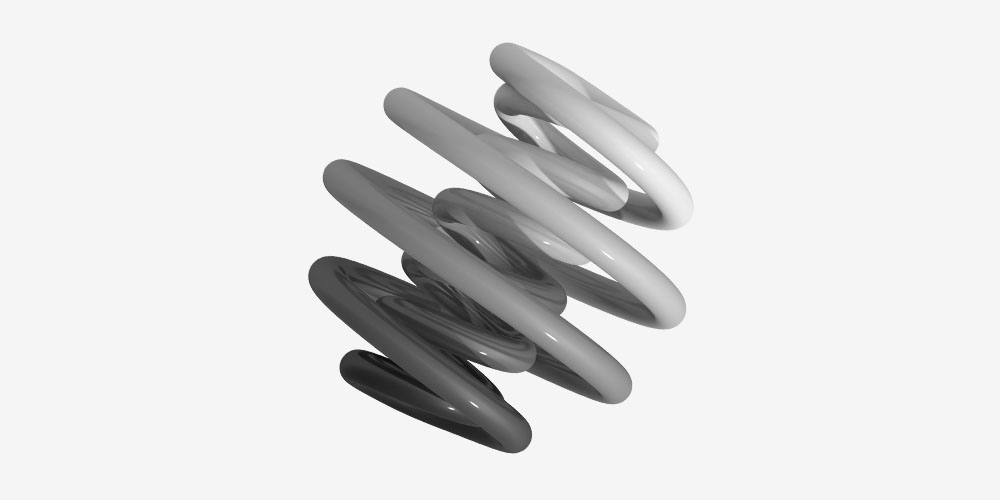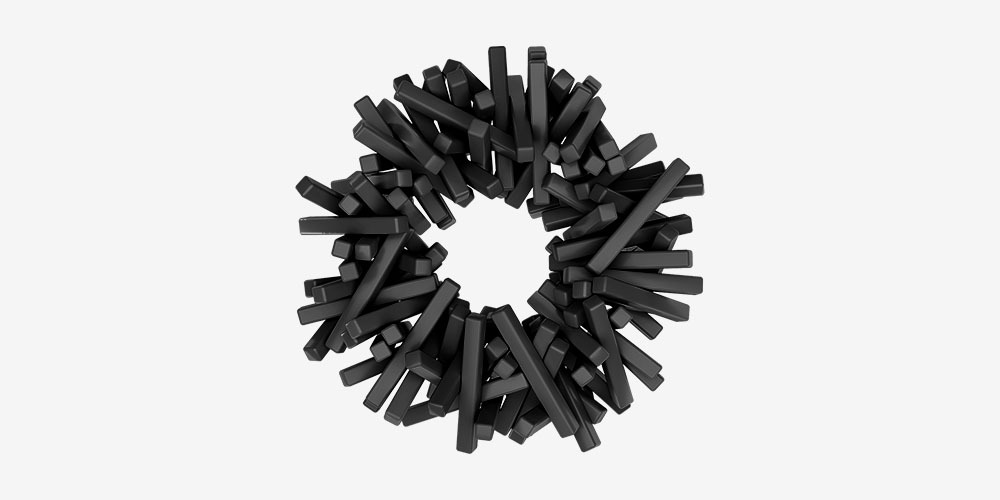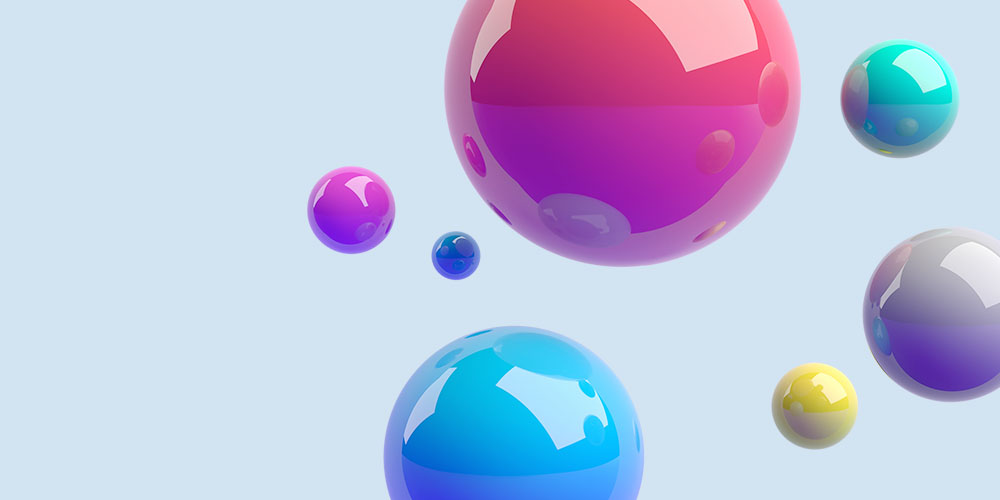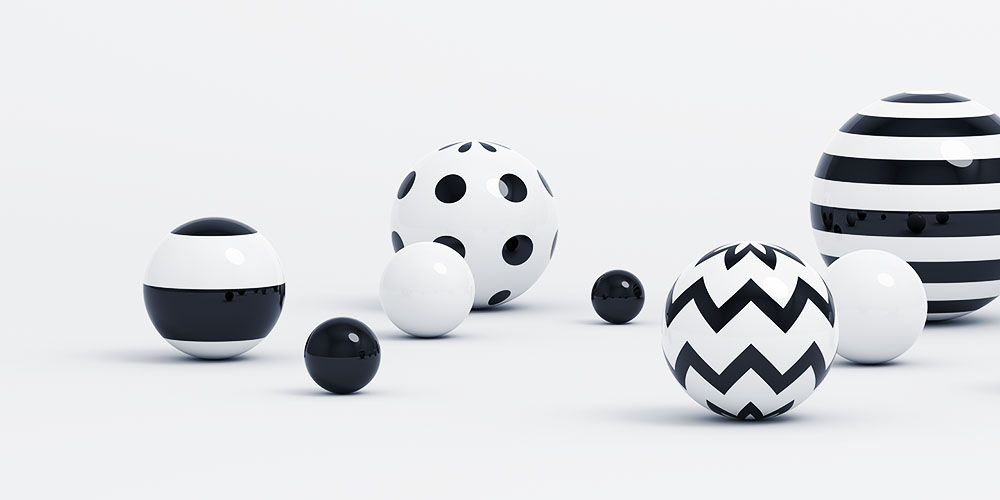Upgrade email campaigns have the biggest financial leverage for your SaaS business. The users are well-primed, and they’re already receiving value from your product on the free plan. You only need to apply a bit of email marketing magic to convert them to paying customers.
But it’s easier said than done.
If you’ve tried it before, then you know that convincing users to switch to a higher plan is not that simple. Crafting a killer upgrade email and getting someone to act on it is one of the most challenging aspects of SaaS email marketing.
We’re here to help with upgrade email templates, and recommendations how to structure your campaigns.
This guide includes all the information you need to get better at writing upgrade emails. You’ll discover how upgrade emails work, what to include in them, and how to know if a person is ready to upgrade. Plus, we’ll also share a template for a perfect upgrade email sequence.
In this guide:
- What’s an upgrade email?
- How to set up an upgrade email campaign: structure, timing, targeting, frequency, and content
- Upgrade email template: a full-text 4-email sequence
- How to ensure that your upgrade email sequence works
As a prerequisite, we recommend you to check out our guide on email marketing strategy.
Don’t wait for the muse. Apply this step-by-step method to write high-performing email campaigns in hours, not weeks.
What’s an upgrade email?
Upgrade emails are emails you send to SaaS users with the goal of convincing them to switch to a higher plan.
Most times, though, we’re talking about a whole email campaign (sequence).
Upgrade-to-paid campaign is an evergreen sales campaign used to convert free users into paying customers. This campaign is a must-have for any freemium SaaS business. The volume of free users is high, and email automation is the perfect way to convert them to paid.
This is a long sequence of sales nudges, spaced out in time.
In most cases, we send upgrade emails to trial users or those on a freemium plan. These users are on the verge of paying us money. They’ve been using the product (or testing it, in the case of a trial.) Many of them would have already experienced the value of our product.
An upgrade email should convince them to take the next step.
Upgrade emails all try to accomplish the same thing — convert the user to paid. But these messages come in different shapes and sizes.
Some are just simple upgrade notifications. Their focus is on getting users to hit the subscribe button. Good example from Social Intents:
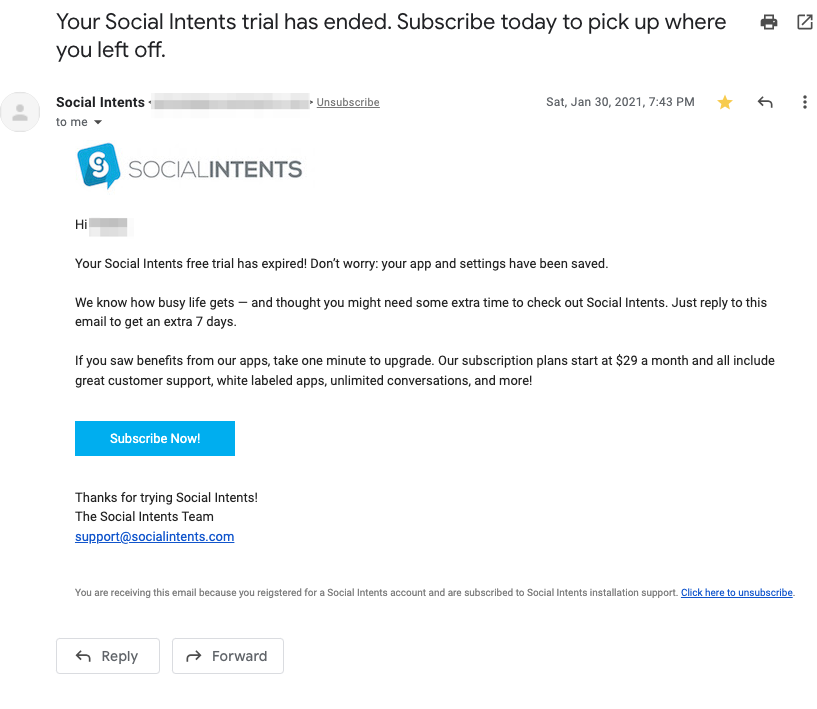
See our full collection of 20+ trial expiration emails for SaaS companies.
Others tell users that their trial has expired and offer options to switch to a paid account or get some extra time to evaluate the product. See this email from TimeHero:
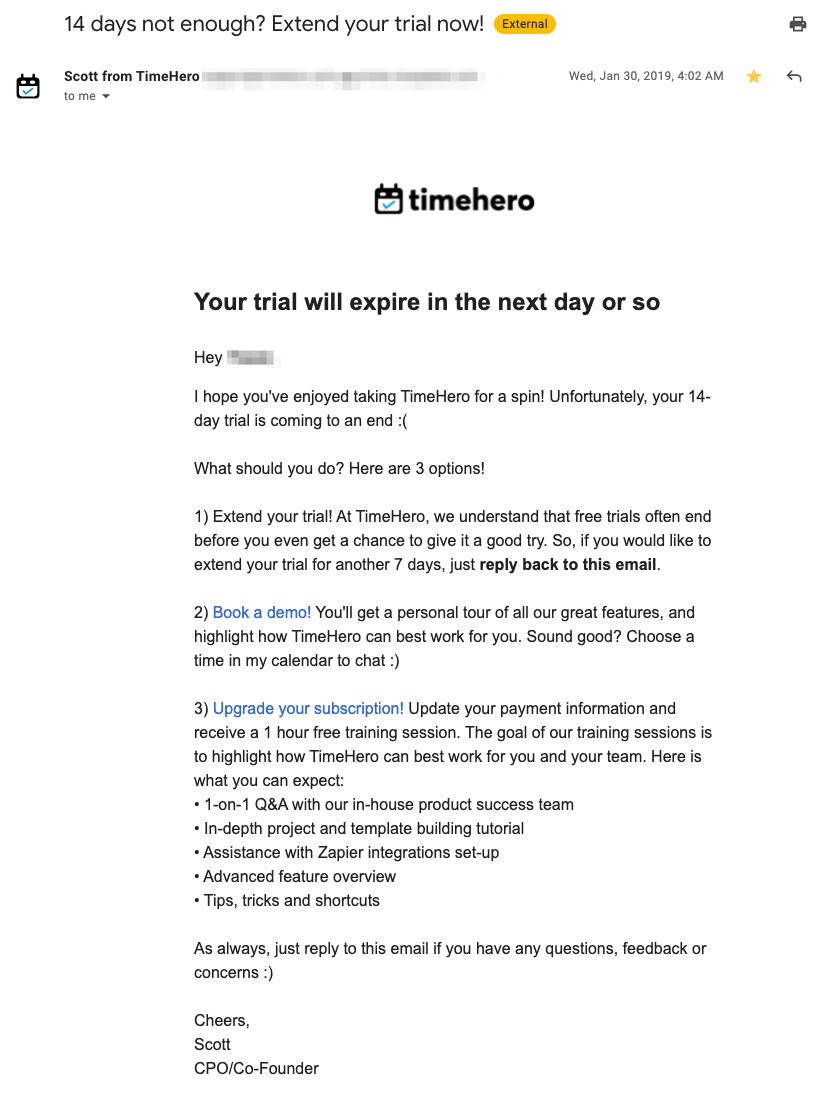
Here’s another example. AppSignal team is asking their customers to upgrade to a higher paid plan based on usage. Note how they’re including specific numbers to support the request.
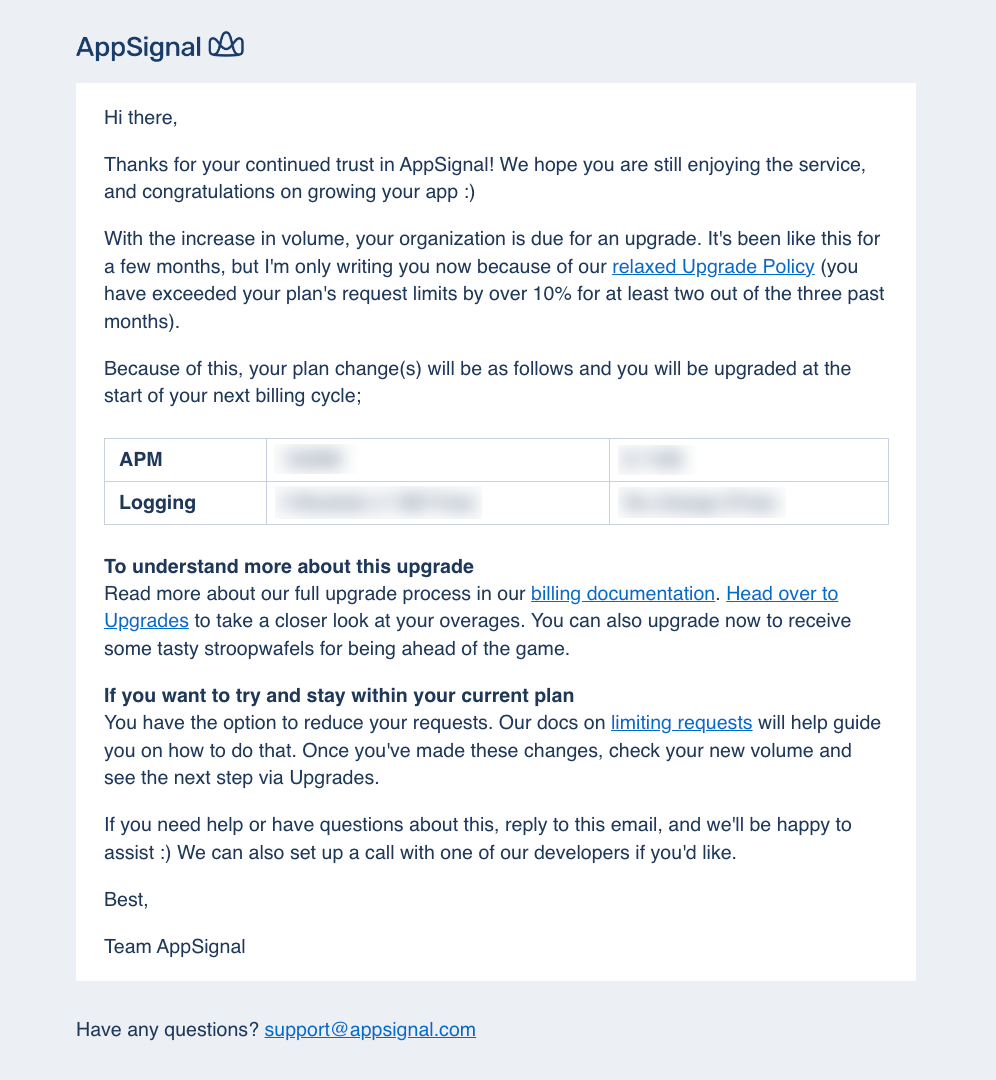
And then, there are complete email sequences aiming to convince users to upgrade and get access to premium features.
But there’s something you need to know about those messages…
When do upgrade emails work best?
Upgrade emails work.
They’re a great strategy for you to get more paying users and boost revenue. But they work only if your product and trial work for the user. Your product must meet specific criteria for that to happen.
Here’s when upgrade emails make sense:
- You have a decent product that works. This should go without saying, but we sometimes see founders trying to upgrade users to an unfinished product. Sure, it sometimes works, but generally, you need to have a decent offering for users to want to start paying you.
- The customer has understood its value during the trial. Coming to the end of it, they know what the product can do for them and see the value of continuing using it.
- Ideally, the customer has already activated. Meaning, they have actually started using the product and receiving value from it.
- Your trial works without a credit card. Because otherwise, their card is charged automatically and there is no need to convince them.
How to set up an upgrade email campaign
Before we show you a template that could help you set up and run upgrade email campaigns, let’s discuss some concepts that will help you better understand how to use it.
Campaign structure
Upgrade emails are rarely a single message. You need to reach out to users at least 3 or 4 times to warrant any action.
The campaign can be even longer in the case of freemium users. Because the premise of the freemium plan is that a user gets to use certain functionality for free, the upgrade campaign must partially work as if you were nurturing those people to start using the product more.
In many cases, the “freemium to paid” campaign may often require 12 months or longer, with an exit condition.
Those twelve emails could go in 30-day intervals. The exit condition would be “exit when the user upgrades” so that the campaign terminates when they do.
Email sending can get expensive for growing SaaS businesses. So you need to find an optimal period of time for upgrade emails — e.g. 3 or 6 months. After that, you can remove free users from your email software. Learn more about cutting email costs in this guide on high-volume email.
Campaign timing & targeting
Another critical aspect is the timing. What’s the best time to send upgrade emails?
Overall, there are three main conditions that determine when to initiate the upgrade campaign. You can any of them as a trigger:
- When the user reached the activation event before the trial had ended. Since the person has understood the value of the product already, there is no point in waiting until the trial ends to suggest an upgrade.
- When a user reaches the end of the free trial.
- When the user is on the “forever free” plan, and activated. In this case, the goal of offering that free plan is to get those users to start using the product, understand its value, and decide to upgrade.
Don’t send upgrade emails prematurely!
Wait until the user activates. It’s particularly true for freemium products: it doesn’t make sense to send upgrade emails until the customer starts using the tool. Instead, you should focus on activating them.
If we look at the lifecycle journey for a freemium SaaS company, you’ll see that “Activated Free Users” segment:
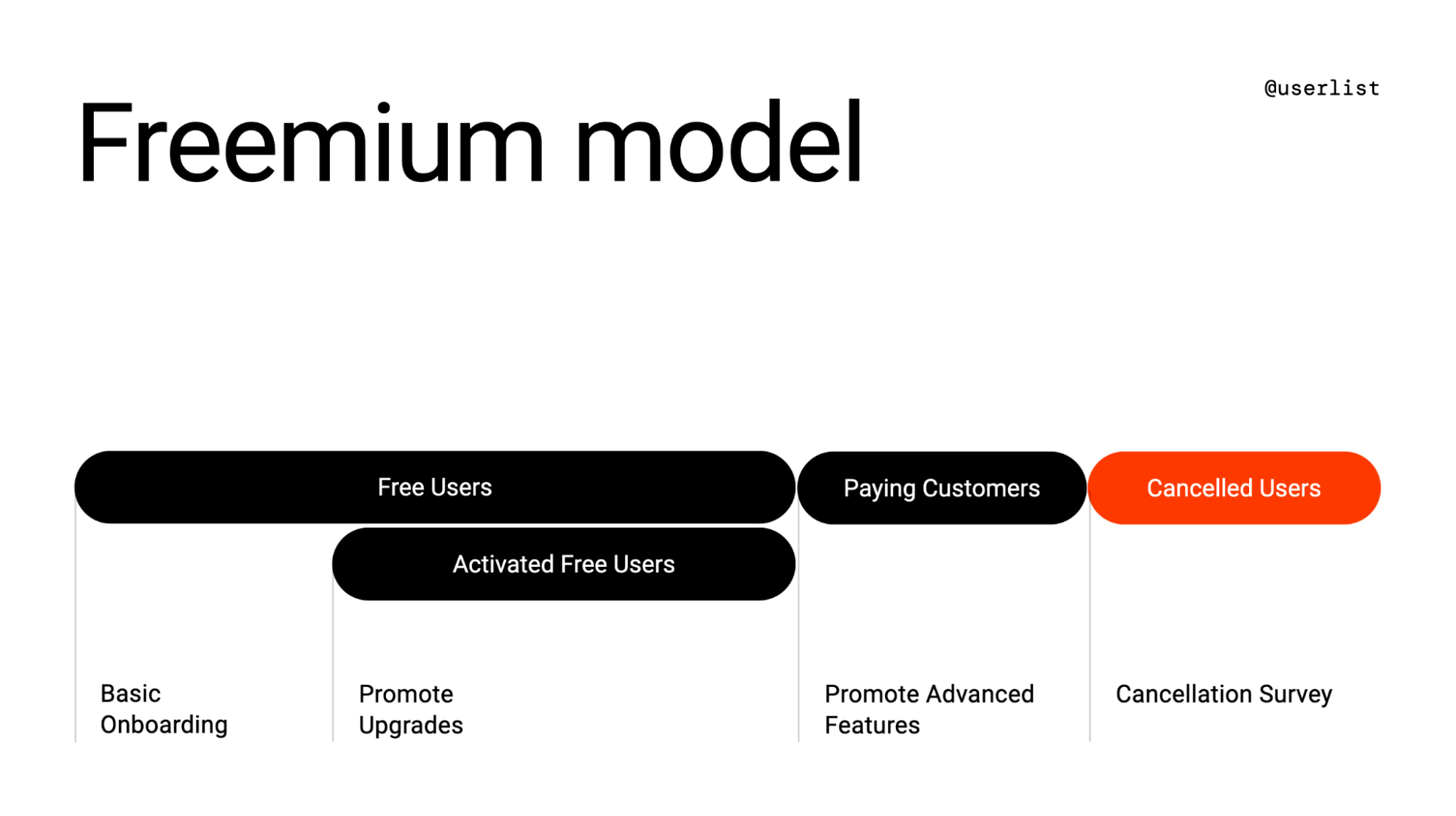
Email sending frequency
As for the sending frequency, we recommend:
- Set up upgrade emails to go 1-2 days apart for time-sensitive trials (eg. 7-day trial, 14-day trial, etc.)
- Use longer delays (e.g. 7, 14, or 30 days) for “forever free” accounts.
With that in mind, here’s an example upgrade email sequence to use.
Campaign setup
As mentioned above, you want to send your upgrade email to free users who have activated, i.e. have already started receiving value from your product. We recommend to set up the following segments:
| Segment Name | Conditions | What to Send |
|---|---|---|
| Free | billing_status = free | User onboarding campaign |
| Free: Activated | billing_status = free and (e.g.) photos > 0 | Upgrade to paid (evergreen campaign) |
So your trigger for the upgrade campaign can look like this: user joined segment Free: Activated.
Read more in these articles:
- SaaS Email Marketing Strategy: Everything You Need to Know
- The Ultimate Guide to Customer Segmentation for SaaS
- Segmenting Accounts vs Individual Users: Best Practices for B2B SaaS
How to write the actual emails
What content shall you include in your evergreen upgrade email campaign? If you only send hard-sell upgrade emails, these emails will do more harm than good. The potential customers will get frustrated with your brand.
Instead, mix-and-match 75% soft nudges (like inspiring case studies or testimonials) with 25% hard-sell emails. Those “hard sell” emails can include time-sensitive offers, coupons, or anything else that stimulates immediate purchase.
“Jab, Jab, Jab, Right Hook,” as Gary V. says in his book.
Don’t wait for the muse. Apply this step-by-step method to write high-performing email campaigns in hours, not weeks.
Upgrade email template
The 4-email sequence below will help your SaaS business encourage users to upgrade to a paid (or higher) price plan.
To achieve that, the sequence focuses on showing users how much value they’re already getting from the product and highlights premium features available in paid plans.
Message #1
Subject: [Positive statement about how the product works for them.] E.g.: You’ve got bookings!
Great news Jane: You’ve got bookings!
Now, you may be wondering: what happens next? How can you…
[List options to take the next steps to feeling value from your product, e.g…
Get new insights from their data?
Get their proposal signed faster?
Understand their users’ behavior?]
With a [paid plan name] account, you can do all these things and more, right inside [Product].
I want to try a [paid plan name] plan. Take me to my Billing page now. [link]
Or…
Show me how to….
[Reference first bullet above + link to a knowledge base article/video tutorial]
[Reference second bullet above + link to a knowledge base article/video tutorial]
[Reference third bullet above + link to a knowledge base article/video tutorial]
Got questions? Need help? Just reply and let us know — we’re here for you.
[Signature]
Message #2
Subject: [Intriguing phrase about how a paid feature will make their lives easier.] E.g.: No more dull afternoons of compiling reports!
Hi Jane,
[Pain point referenced in subject line] is no fun. [Describe problems the pain point causes. E.g., keeps them at the office late in the evening, forces them to delete important files or scatter them across multiple locations, wastes precious hours each week preparing for meetings, and then having to reschedule.]
With [paid feature], you’ll [get huge benefit. E.g., have the freedom to take Friday afternoons off, rest easy knowing their files are all in one place, increase productivity by 18%].
Since [paid feature] is part of our [paid plan name] plan, you’ll just want to upgrade to [paid plan name] and you’ll be good to go!
Sounds great. Take me to my Billing page now, so I can start [getting benefit] [link].
Talk soon,
[Signature]
Message #3
Subject: [Intriguing phrase referencing the biggest alternative solution/competitor your customers often switch to your product from.] E.g.: Yes, you could send your proposals as Word doc attachments…
Hey Jane,
Sometimes, it’s great to use [alternative solution/competitor, e.g. Microsoft Word] to [do what your product does. E.g., send proposals].
[2-3 sentences describing this scenario. Point out the flaws, in a lighthearted way. Avoid being overly critical or coming across as downright rude. E.g…
If you’re cool with your client having full editing privileges inside your proposal…
If it’s no big deal that they can forward your proposal wherever they want, to whomever they want, without you having a clue whose eyeballs are on it…
If you don’t mind forcing your client to print out your proposal, hunt down a pen to sign it, scan it back onto their computer, and email the whole thing over to you…
If you’re happy spending days or weeks sitting around, waiting to find out whether that deal’s gonna close (while your proposal may just be stuck in someone’s spam folder, collecting dust)…]
Definitely pick [alternative solution / competitor, e.g. Microsoft Word].
Using [Product] will be a little different.
[2-3 sentences describing the benefits of using your product. E.g…
With [Product], you’ll know exactly when your proposal’s been viewed, and by whom. Not getting any views at all? Then you’ll know it’s a good time to follow up and see whether you got stuck in spam.
With [Product], your client will be able to accept, sign, and return your proposal back to you, all in one quick step. No downloading, printing, scanning, or return-emailing is required.
And that means with [Product], your time spent waiting, hoping, and crossing your fingers for the deal to close gets cut from days or weeks to mere hours — sometimes even minutes.
[1 sentence summarizing and emphasizing the larger benefit. E.g., Take your proposals as seriously as you want your clients to take you.]
Join [Product] [paid plan name] today.
Happy [verb your product does]ing,
[Signature]
Message #4
Subject: [Intriguing phrase comparing the experience they’re having on the trial / free plan to the improved experience they’ll get when they upgrade.] E.g: What’s better than Userlist?
Hey Jane,
It’s great to run on [Product name].
But it’s even better to [benefit they’ll get when they upgrade,. Eg. put the spotlight on your brand.]
So far, you’ve [been using the trial / free version of the product. E.g., already sent a few proposals to clients. And they’ve all seen that little “Powered by [Product]” snippet at the bottom of each page.]
To [get benefit / remove trial limitation, e.g. remove that snippet] and [get benefit, e.g. keep your clients focused on you], upgrade to our [paid plan name] for just [$___ / month]. [link]
When you join [Product] [paid plan name], you’ll get so many more perks than just [original benefit stated]. You’ll also get…
- High-value feature #1
- High-value feature #2
- High-value feature #3
- High-value feature #4
- High-value feature #5
Plus, we’ll be right here to offer help, share tips, and make sure you squeeze every drop of value out of your new [paid plan name] account.
And if you give [paid plan name] a shot, but find out it’s not right for you? No worries. You’re welcome to cancel or downgrade your account at any time.
Upgrade today [link]. Cancel or downgrade any time.
Hope to see you in your brand new [paid plan name] account soon!
[Signature]
How to ensure that your upgrade email sequence works
To close off, let us share some best practices for sending upgrade emails. These ideas will help you understand what makes a solid upgrade email, and what factors you should pay attention to when creating it.
#1. Make it personal
We’re sure you know the value of personalization in email marketing already. It works similarly with upgrade emails. Even a simple touch like adding the person’s name in the email will go a long way.
But as you can see in the template above, there are ways to take this further.
For example, you could include stats and data about the results a person’s got with your tool.
Don’t worry; you don’t have to be specific. However, even if you just reference some general wins (e.g. you got more bookings!), you will make the email more relevant to the recipient.
#2. Use social proof
Social proof — testimonials, case studies, or even social media mentions — are extremely powerful in persuading users to take the next step.
For one, these elements can reassure the person about their impressions of your tool. They might love it but reading how others achieved similar results with the product will only reassure them of the decision to upgrade.
#3. Describe premium features
Another great strategy that helps persuade someone to upgrade is telling them what they’re missing out by staying on the free plan (or letting the trial expire.)
We’ve included this technique in emails #2 and #3 above.
#4. Offer the most relevant pricing tier
If you offer more than one paid plan, suggest the best options for the user. By doing so, you will eliminate analysis paralysis, and make it easier for the person to switch.
By suggesting a plan, you’ll point the person in the right direction in choosing the best option for themselves.
#5. Handle objections
Social proof is one of the most powerful ways of handling objections.
But a user might have other questions that prevent them from upgrading. Tackle them in the upgrade email to increase their chances of switching.
Message #3 in the template above solves several potential objections. Its purpose is to address those and stop users from thinking about those factors.
Because once handled, these objections will no longer stand in their way to upgrading.
#6. Inspire greater product usage
Finally, you can show a person what their world would be like when they’ve had access to all premium features, and how easy it is for it to happen.
To do that, you need to inspire them to use the product more and show them how.
Use case studies, recipes, templates, and walkthroughs to educate the user on how to take the value they receive from your app to a whole new level.
Show them product capabilities they may not have realized, and equip them with all the tools and information to use them immediately.
Time to craft your own upgrade email campaign
Now you know how to create a powerful upgrade campaign, and have a template that you could start using right away.
Good luck!
P.S. If you feel lost, or would like to talk to a human, we invite you to book a free strategy call with us. No strings attached.
More SaaS email examples & templates
- 12+ Best SaaS Newsletter Examples
- 7 High-Converting Email Templates for Every SaaS
- 20+ SaaS Product Launch Emails
- 20+ Trial Expiration Emails
- 20+ Examples of SaaS Re-engagement Emails
Don’t miss out on new articles. Subscribe to our newsletter and get your monthly dose of SaaS email marketing insights.


